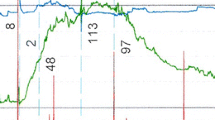Abstract
Mixed urinary incontinence (MUI) has become a diagnosis of increased interest in the fields of urology and urogynecology, as drugs and treatments targeting urgency-related and stress-related symptoms are being developed and evaluated. We think the concept of “mixed incotinence” warrants revisiting because confounding clinical conditions exist, which result in a heterogeneous population of patients receiving the same diagnosis. The classification system for patients with signs and symptoms of MUI should undergo refinement. In addition, clinical trials for MUI should clearly delineate the lower urinary tract signs and symptoms found in the study population. Current study outcomes do not apply to the entire mix of patients included under the diagnosis of MUI, thus limiting their value. Investigation into the pathophysiologic basis of MUI and refinement of the definition of MUI are necessary if we are to evaluate the effect of future treatments on stress and urge components.
Similar content being viewed by others
References and Recommended Reading
Abrams P, Cardozo L, Fall M, et al.: The standardization of terminology in lower urinary tract function: report from the standardization sub-committee of the International Continence Society. Am J Obstet Gynecol 2002, 21:167–178.
Cundiff GW, Harris R, Coates K, Bump RC: Clinical predictors of urinary incontinence in women. Am J Obstet Gynecol 1997, 177:262–267.
Jung AY, Fraser MO, Ozawa H, et al.: Urethral afferent nerve activity affects the micturition reflex: implication for the relationship between stress incontinence and detrusor instability. J Urol 1999, 162:204–212.
Bump RC: The urethrodetrusor facilitative reflex in women: results of urethral perfusion studies. Am J Obstet Gynecol 2000, 182:794–804.
Bortolotti A, Bernardini B, Colli E, Di et al.: Prevalence and risk factors for urinary incontinence in Italy. Eur Urol 2000, 37:30–35.
Diokno AC, Brock BM, Brown MB, Herzog AR: Prevalence of urinary incontinence and other urological symptoms in the non-institutionalized elderly. J Urol 1986, 136:1022–1025.
Sandvik H, Hunskaar S, Vanvik A, et al.: Diagnostic classification of female urinary incontinence: an epidemiological survey corrected for validity. J Clin Epidemiol 1995, 38:339–343.
Peyrat L, Haillot O, Bruyere F, et al.: Prevalence and risk factors of urinary incontinence in young and middle-aged women. BJU Int 2002, 89:61–66.
Mayne CJ, Assassa RP: Epidemiology of incontinence and prolapse. BJOG 2004, 111(suppl 1):2–4.
Hampel C, Wienhold D, Benken N, et al.: Definition of overactive bladder and epidemiology of urinary incontinence. Urology 1997, 50 (suppl 6A):4–14.
Rortveit G, Hannestad YS, Daltveit AK, Hunskaar S: Age-and type-dependent effects of parity on urinary incontinence: the Norwegian EPINCONT Study. Obstet Gynecol 2001, 98:1004–1010.
Khullar V, Hill S, Laval KU, et al.: Treatment of urge-predominant mixed urinary incontinence with tolterodine extended-release: a randomized, placebo-controlled trial. Urology 2004, 64:269–275.
Bump RC, Norton PA, Zinner NR, Yalcin I: Mixed urinary incontinence symptoms: urodynamic findings, incontinence severity and treatment response. Obstet Gynecol 2003, 102:76–83.
But I, Faganelj M, Sostaric A: Functional magnetic stimulation for mixed urinary incontinence. J Urol 2005, 173:1644–1646.
Author information
Authors and Affiliations
Rights and permissions
About this article
Cite this article
Tyagi, R., Staskin, D.R. Mixed incontinence: The misclassification of patients and limitations of clinical trials. Curr Bladder Dysfunct Rep 1, 35–39 (2006). https://doi.org/10.1007/s11884-006-0005-5
Issue Date:
DOI: https://doi.org/10.1007/s11884-006-0005-5




